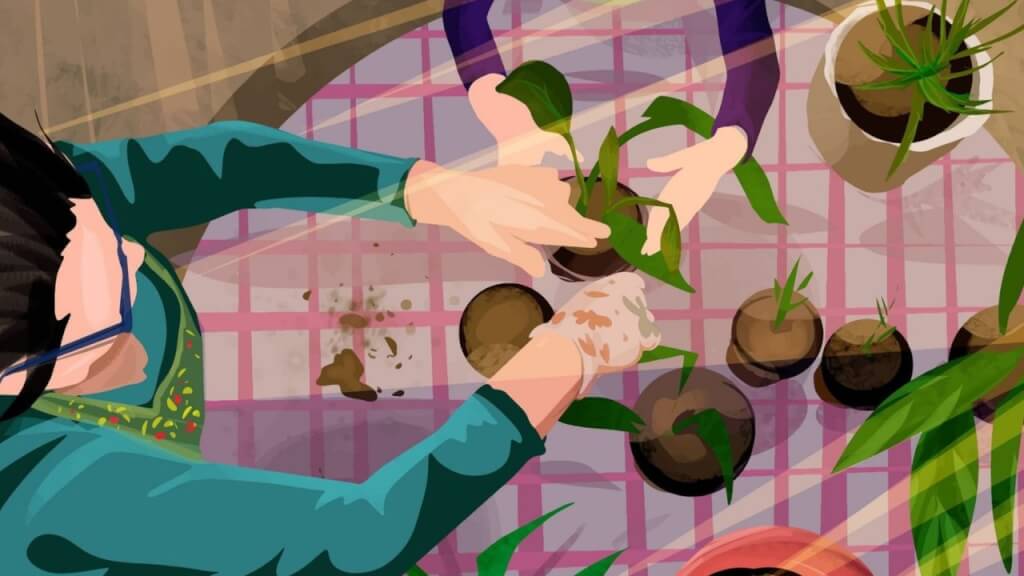Long before ‘shop local’ and ‘green living’ were Instagram hashtags, there were people quietly living the sustainable lifestyle. They didn’t have bamboo straws or plant-based mylk What they did have was a keen sense of making the best of limited resources. You don’t have to travel too far to meet them either. They might be under your roof, or in the home you spent your weekends and summer holidays in as a child. If we take a peek into the way our grandmas lived their lives, we might be opening our doors to a much simpler understanding of sustainable living. Here are five ways our grandmas were sustainable before it was cool.
No plastic container got dumped
Although take-out and ordering in weren’t common for our grandmoms, whenever a plastic container did enter the house, it never ended up in the dustbin. When I visit my grandparents, I’m sent back home with copious amounts of food- chicken curry that was made that afternoon, chikoos and kiwis, and a whole range of dry fruits they want us to eat every day. And all of it is packed in takeout containers that were carefully washed and stored for this very purpose. At your grandma’s house, there’s probably a reusable container for every possible food item or storage solution. And you can be rest assured that all of it will be stacked in a cloth or plastic bag they had saved from the last time they went shopping.
Leftovers always found their way back into meals
For our naanis and daadis, wasting food has never been an acceptable activity. You either lick your plates clean or refrigerate the leftovers so they can be repurposed for the next meal. Fruits and vegetables were stored carefully and used up in time. On the off-chance that they remain ignored for too long, there’s always something to be done with them. Overripe bananas are turned into Mangalore buns or appams and overly sweet mangos are pureed and stashed in the freezer so the house has a supply of aamras well after the summer passes.
No tear was too big to be mended
It seems difficult to believe now but so many of our grandmoms stitched clothes for themselves and for others all the time. As kids, my cousins and I always had matching dresses stitched by our grandmom, that were to be worn on special occasions like birthdays and family get-togethers. On so many afternoons, while we played chaotic games in one room, she would pull out her foot treadle sewing machine and go about mending tears in our store-bought t-shirts or stitch miniature skirts for our dolls with leftover fabric. Old saris would become sheets to pull over on warm summer nights and kurtas were always stored and altered so they could be used by sisters, daughters and cousins. The stereotype of a knitting grandma may be far too cliché, but they knew how to increase the lifespan of clothing and embrace slow fashion long before it got trendy.
Shopping always meant buying locally
Even when our grandmoms allowed themselves to indulge, they were always supporting their local businesses. Clothes and fabrics were bought from small boutiques and neighbourhood tailors. If jewellery had to be made, it was with the help of small jewellers who usually knew the whole family by name. Wedding gifts were always practical and long-lasting, like steel plates and vessels—inscribed with the gift-giver’s name of course—so the newly-weds would have a well-stocked kitchen in their new home. Expensive China was an indulgence only allowed on rare trips abroad and were usually relegated to glass cupboards as showpieces back home. On a daily basis, groceries came from kirana shops, fruits and vegetables were bought from vendors down the street and the anda-pav and farsaan-waalas were familiar faces that showed up at the door every other day. And, of course, the more precious kitchen cargo, like chutney powders, pickles and papads, only came from trusted suppliers and relatives back in the village.
Kitchen gardens always came to the rescue
As if working and managing the household wasn’t enough, our grandmoms were also avid gardeners. In stolen moments and soft Sunday mornings when everyone was still asleep, they were quietly tending to their mini kitchen gardens where they grew chillies, lemons, mint and tulsi. Window panes were always packed with aloe vera plants to soothe burns, creepers extending their vines up the grills and bright flowers shining in the sunlight. There was no fancy equipment in use either. All their gardening materials came from within the house. Coconut coir was mixed with soil to trap moisture and all variety of fruit and vegetable peels acted as manure. When garlands had to be made for the mini mandir at home, flowers came from the house plants and when food had to be garnished, a few sprigs of mint or coriander were always readily available at the window.




No Comments